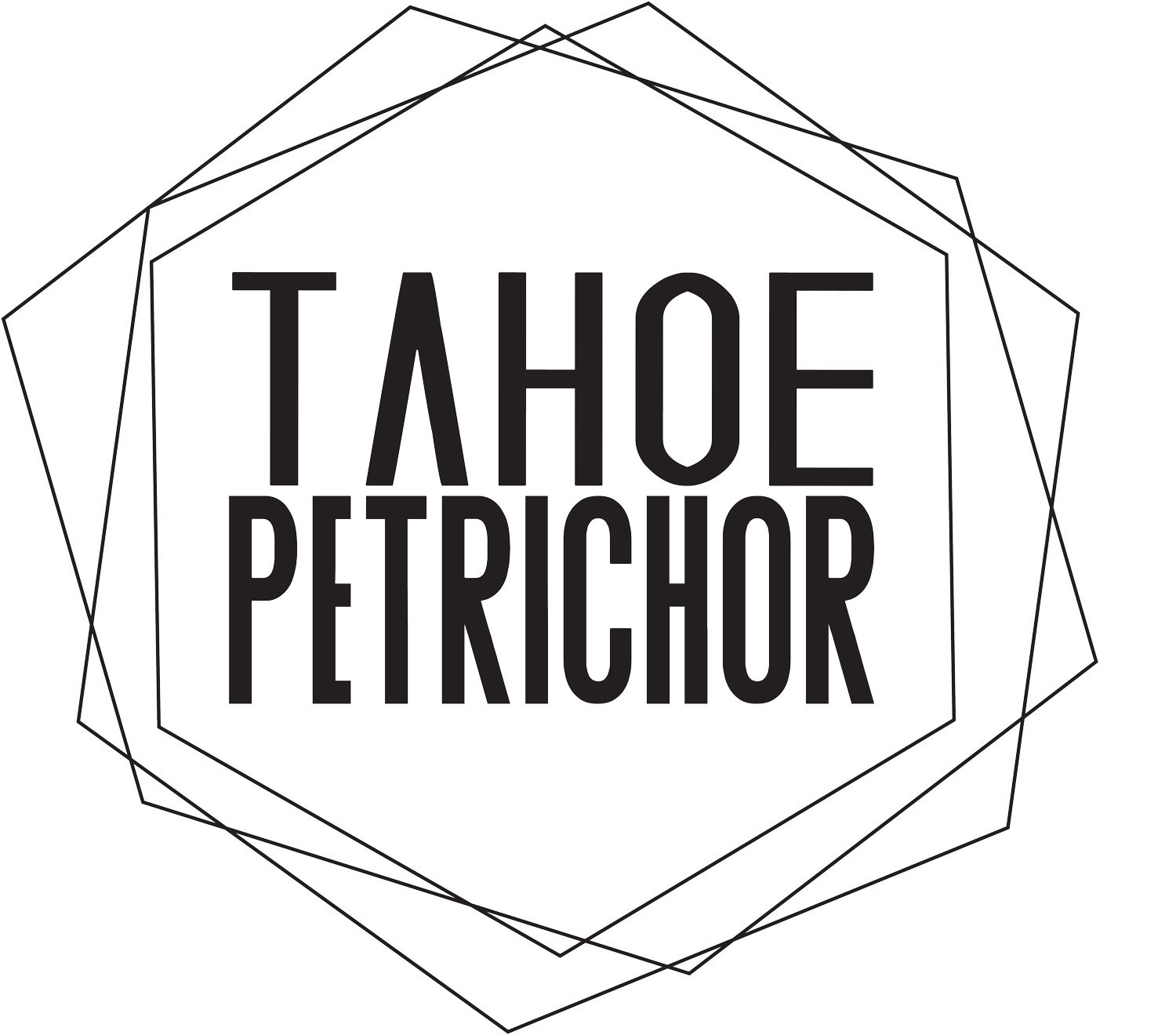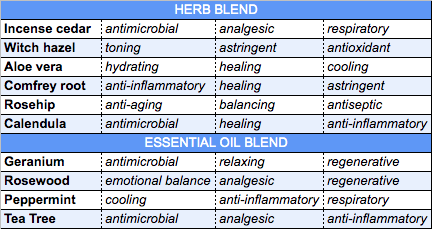FULL RESEARCH
Echinacea
Echinacea - Daisy family (Echinacea purpurea - Asteraceae)
Echinacea is a well-known herb with immune-modulatory, anti-inflammatory, vulnerary, anti-infectious, and skin healing properties. The International Journal of Cosmetic Science (2010) evaluated the effects of echinacea on the skin. Results showed that after one month of topical application, echinacea protected against oxidative stress, reduced wrinkles, and improved skin hydration. In Canada, researchers from the Journal of Phytotherapy Research (2010) found echinacea to be useful for acne and inflamed follicles due to its antibacterial and anti-inflammatory actions on the skin.
Self-heal
Self-heal - Mint family (Prunella Vulgaris - Lamiaceae)
Self-heal, also known as “heal all,” has been used for thousands of years as a multi-purpose herbal remedy. This purple flowering member of the mint family is used as a purifying and healing herb for topical and internal use. Self-heal is an edible flower that can be cooked and eaten, used as a tea, essential oil, or in skincare. Although aging is unavoidable, environmental factors, genetic makeup, dietary and lifestyle habits are great influencers on how your skin will age. Your daily skin and health care regime are important lifestyle habits to maintain the integrity of your skin. Normal aging causes fine, and pale wrinkles; photo-damage causes more coarse wrinkles and skin roughness.
Throughout history, P. vulgaris has been used for its anti-inflammatory and antioxidant properties. In the last year or two, multiple studies confirmed the skin protective and anti-aging effects of this herbal powerhouse. In a study conducted by the Journal of Rejuvenation Research (2018), researchers found self-heal to be protective against inflammation and UV damage. Results showed enhanced collagen synthesis, reduced radical oxygen species (ROS) associated with photo-aging. This is especially important to us outdoor enthusiasts since we are at a higher risk of UV irradiation, which causes skin damage, inflammation, wrinkles, oxidative and cellular damage. Self-heal was able to reduce hormones (glucocorticoid hormones such as hydrocortisone or cortisol) associated with age, stress, and declining skin structure. Excessive GH has been shown to reduce skin integrity (thinning and flattening of cells) and reduced collagen content (Evidence-based complementary and alternative medicine, 2018).
Calendula
Calendula - Daisy family (Calendula officinalis - Asteraceae)
Calendula is a bright yellow flower native to the Mediterranean countries. It was first brought to America by colonists who used this herb for protection (spiritually and physically). Now it is one of the most common and widespread medicinal plants around the world. It typically blooms with the beginning of summer and is commonly associated with the new moon. Calendula can also be referred to as marigold but it is different than the common garden marigold, which is of the Tagetes species. The petals are edible and can be added to salads for a color pop with some useful therapeutic benefits. When cooked and added to rice or similar foods, it is known to change the pigment toward yellow. The flower has a wide range of therapeutic uses both internally and topically.
In Ayurvedic medicine, calendula is cooling, bitter, and pungent. In Traditional Chinese Medicine, the flower is neutral and drying. Calendula is associated with the sun and fire element. Historically, calendula was used as an astringent and anti-inflammatory agent integrated similarly to saffron (the most expensive spice in the world). Calendula was used to increase perspiration (fever & flu), to treat jaundice (liver dysfunction), stomach ulcers, during menses, inflammatory eye and skin conditions (wounds, sores, burns, cuts, minor infection). Calendula was ornamentally and strategically placed to ward off evil energy and infectious disease. The pigment was used for products, from clothing dye to cheese.
Since the 80s, calendula had a beneficial effect on tissue regeneration and epithelial tissue development. Today, triterpenes are applauded for anti-inflammatory capabilities. The European Union has declared that calendula flower has oromucosal and cutaneous benefits with anti-inflammatory, astringent, immuno-stimulant, antiviral, antibacterial, anti-fungal, and vulnerary actions.
Ylang Ylang
Ylang ylang - Souprsop family (Cananga odorata - Annonaceae)
Ylang ylang is considered a tonic for the heart and a relaxant for the nervous system. Fresh, floral, and fruity, ylang ylang essential oil is most commonly used in aromatherapy to improve mood and cognitive function. This flower is used as a sedative, antiseptic, and as an aphrodisiac (in Indonesia they spread ylang ylang flowers on the beds of newlyweds). A study was conducted to evaluate the effects of transdermal absorption by assessing physiological parameters (temperature, pulse, breathing, and blood pressure). The people involved in the study found themselves calmer and more relaxed than those in the control group. Many other studies over the last 13 years have shown consistent results (American Botanical Council, 2007; Hongratanaworakit & Buchbauer, 2006). Since 2006, researchers found ylang ylang to have antimicrobial, anti-inflammatory, antioxidant, skin healing activities. Traditional uses range from asthma treatment to sexual anxiety, headaches, infections to itchy skin. Ylang ylang contains germacrene, caryophyllene, geranyl acetate, benzyl benzoate, linalool and trace amounts of others (Evidence-based complementary and alternative medicine, 2015; Han, Beaumont, & Stevens, 2017).
Frankincense
Frankincense - Torchwoods family (Boswellia serrata - Burseraceae)
The use of frankincense dates back thousands of years. Frankincense was used for rejuvenation in ancient Egypt in facial masks, makeup, and salves for rejuvenation (American Botanical Council, 2010). It was used during ancient rituals and ceremonies, integrated into ancient medicine like Traditional Chinese and Ayurveda, during the Roman and Greek empires, and in religious texts as in Christianity and Judaism (Cohen, 2019). Frankincense is the sap or resin harvested from the tree trunks of B. carteri trees. The resin can be distilled into therapeutic essential oils. Frankincense is known most commonly for its neurological benefits, reducing pain, and improving the condition of the skin. Preliminary studies suggest using .5% Boswellia face cream significantly reduced fine surface lines, roughness, and photo-aging scores compared to baseline. Clinically, this tree resin has shown to improve painful conditions (47% reduction) and decrease stiffness. Studies show frankincense can be useful for headaches, aging skin, acne, and bruises though more consistent research is needed (Natural Medicines Database, 2019). The oil has been shown to help slow the breathing and calm the mind, allowing more oxygen to be taken in the body (American Botanical Council, 2010).
Clove
Clove - Myrtle family (Syzygium aromaticum - Myrtaceae)
Cloves come from an evergreen tree in the Indonesian islands. Cloves are formed as the flowers mature. Cloves are used in tobacco products, essential oil, as a culinary spice, and tea (Chai). Applied topically, clove has a numbing, anesthetic quality due to the potent eugenol content. In fact, clove oil has been used in dental procedures at one-fifth of the cost of conventional anesthetics. Clove has been shown to have antimicrobial effects on the skin. Clove has also been used as a mild aphrodisiac, for nausea, and poor circulation (Natural Medicines Database, 2019). According to Pharmaceutical biology (2017), clove was shown to have antioxidant, tissue-remodeling, and anti-inflammatory properties with the ability to improve the cell cycle and cellular stress responses accredited it to eugenol.
Juniper Berry
Juniper - Cypress family (Juniperus - Cupressaceae)
The star local plant of this product, Juniper was considered sacred by indigenous people (American Botanical Council, 2003). In European countries, the bark is burned in hospital rooms to purify the air (NMD, 2019). According to the American Botanical Council (2003), juniper berries were used in baths as early as 1311 as an anti-inflammatory for itchy skin and allergic reactions. By the 15th century, juniper berry was also used as antibacterial for treating infectious wounds. Externally juniper berry is used as an analgesic, antiseptic, antispasmodic, antimicrobial, expectorant, rubefacient, stimulant, astringent, styptic, anti-inflammatory, antioxidant, and sedative. As a wilderness medicine, crushed berries can be applied as a poultice for infections and wounds, swollen joints, and sore muscles. Juniper has also been shown to be useful outdoors as an insect repellent (ACHS, 2018). The aromatics are useful for respiratory conditions and headaches (American Botanical Council, 2003).
To see the full Juniper berry monograph go here
CBD
Our skin has an entire system dedicated to utilizing CBD, the endocannabinoid system. Our skin recognizes CBD and involves a sequence of receptors to regulate the skin cells. Medical studies demonstrate that CBD increases cellular strength, growth, and differentiation. This allows increases immunity, reduces inflammation, and provides antioxidants to treat all sorts of skin conditions.




























